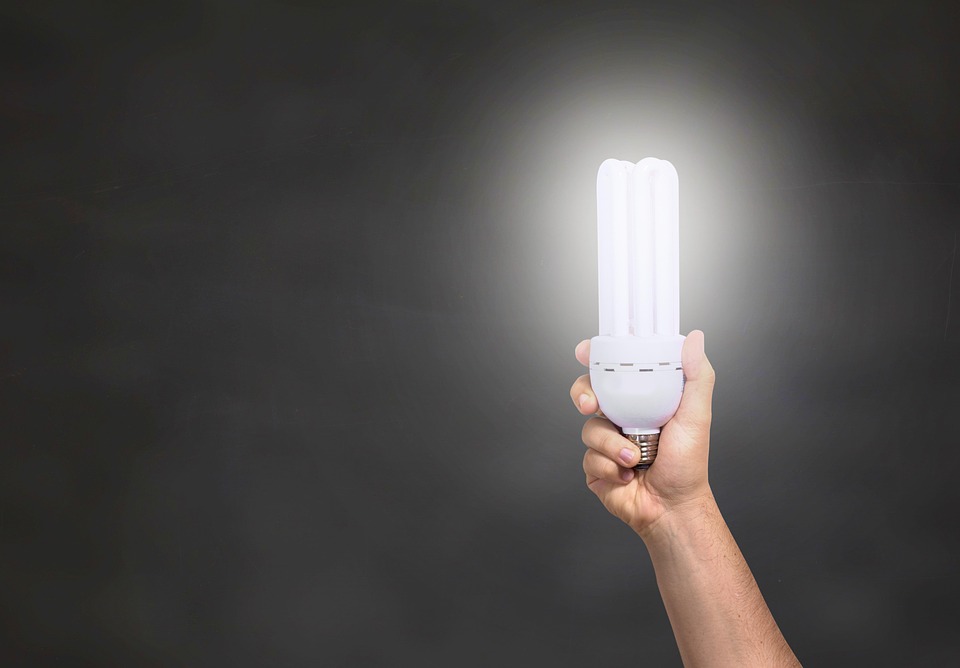
On this Page
On the Same Topic

Navigating ARM Refinancing: Key Considerations for Homeowners

Understanding Refinance Interest Rates: What You Need to Know

Unlocking Savings: The Best 30-Year Refinance Rates of 2023
Understanding VA Loan Refinance Rates: What You Need to Know
Here’s a rewritten version of the content while retaining the HTML tags:
<h1>A Guide to VA Loan Refinance Rates: Key Insights</h1>
<p>The VA loan program, facilitated by the U.S. Department of Veterans Affairs, provides distinct advantages for qualifying veterans and active-duty personnel. One significant benefit of this program is the ability to refinance an existing VA loan at attractive rates. Gaining an understanding of VA loan refinance rates can aid you in making educated financial choices, ultimately saving you money. This article explores various VA loan refinance options, the determinants of refinance rates, and strategies for obtaining optimal rates for your refinancing needs.</p>
<h2>Categories of VA Loan Refinances</h2>
<p>There are mainly two categories of VA loan refinances: the Interest Rate Reduction Refinance Loan (IRRRL) and cash-out refinancing. Each type addresses different financial requirements and comes with its own set of features.</p>
<h3>Interest Rate Reduction Refinance Loan (IRRRL)</h3>
<p>The IRRRL, often called “VA Streamline Refinance,” is meant for veterans looking to reduce their current VA loan interest rate without extensive underwriting. This option presents a straightforward and expedited process as it usually requires minimal documentation. Key features include:</p>
<ul>
<li><strong>No Appraisal Needed:</strong> Generally, there's no need for an appraisal, thereby making the refinancing process more efficient.</li>
<li><strong>Simplified Credit Underwriting:</strong> This can lead to faster approvals, making it a viable option for those with less-than-ideal credit scores.</li>
<li><strong>Reduced Rates:</strong> The primary goal is to lower the interest rate attached to the existing VA loan.</li>
</ul>
<h3>Cash-Out Refinance</h3>
<p>A cash-out refinance allows veterans to tap into the equity they've built up in their homes. This option is ideal for those looking to fund home improvements, pay off existing debts, or cover educational expenses. Here are its standout features:</p>
<ul>
<li><strong>Cash Access:</strong> Homeowners can refinance for an amount exceeding their remaining mortgage, receiving the difference in cash.</li>
<li><strong>Equity Utilization:</strong> This option benefits veterans who have substantial equity in their properties.</li>
</ul>
<h2>Factors Affecting VA Loan Refinance Rates</h2>
<p>Understanding what influences VA loan refinance rates can help you make better financial choices. The main factors include:</p>
<h3>Market Trends</h3>
<p>The general economic climate and interest rate trends are crucial in setting refinance rates. Changes in federal interest rates can lead to shifts in mortgage rates, including those for VA loan refinancing.</p>
<h3>Credit Rating</h3>
<p>Your credit profile plays an essential role in the interest rates offered to you. While VA loans have more flexible guidelines compared to conventional loans, a higher credit score often translates to better terms. It’s wise to check your credit report for any discrepancies before initiating refinancing.</p>
<h3>Loan-to-Value Ratio (LTV)</h3>
<p>The Loan-to-Value ratio compares your mortgage loan amount to your home’s appraised value. A lower LTV ratio usually results in better rates, signaling less risk for lenders. Lenders typically prefer an LTV of 80% or lower.</p>
<h3>Refinance Type</h3>
<p>As mentioned earlier, the IRRRL and cash-out refinancing options often come with different rates. The refinancing type and its purpose can significantly affect rates. For instance, streamlined IRRRLs may have more favorable rates compared to cash-out options due to their reduced risk.</p>
<h2>How to Refinance Your VA Loan</h2>
<p>Refinancing your VA loan might appear intimidating, but following these steps can ease the process:</p>
<h3>1. Identify Your Objectives</h3>
<p>Before diving in, evaluate your financial landscape and goals. Whether your intention is to reduce your interest rate, access cash, or modify your loan duration, understanding your objectives will shape your choices.</p>
<h3>2. Assess Your Current Mortgage</h3>
<p>Review your existing VA loan, focusing on the current interest rate, remaining balance, and terms. This assessment will help you determine the feasibility of refinancing.</p>
<h3>3. Compare Lenders</h3>
<p>Different lenders offer varying rates and terms. Exploring multiple options enables you to secure the most favorable deal. Make sure to clarify if the rates quoted are fixed or subject to change and understand any associated fees.</p>
<h3>4. Compile Your Documentation</h3>
<p>While IRRRLs generally require less documentation, cash-out refinances have stricter requirements. Common documentation includes:</p>
<ul>
<li>Income verification</li>
<li>Current mortgage statements</li>
<li>Tax returns</li>
<li>Proof of benefits (if applicable)</li>
</ul>
<h3>5. Lock in Your Rate</h3>
<p>Once you identify a suitable lender, consider locking in your rate to shield yourself from interest fluctuations during the underwriting process.</p>
<h3>6. Finalize the Loan</h3>
<p>Upon approval, you’ll receive a closing disclosure outlining your loan terms and costs. Be sure to review this document thoroughly before signing.</p>
<h2>Advantages of Refinancing Your VA Loan</h2>
<p>Refinancing your VA loan can lead to numerous benefits, including:</p>
<h3>Cost Savings</h3>
<p>By lowering your interest rate, you'll significantly reduce your monthly payments, allowing for increased savings over time.</p>
<h3>Cash Accessibility</h3>
<p>Opting for a cash-out refinance gives you access to cash derived from your established equity, which can be utilized for enhancements or other financial needs.</p>
<h3>Adaptable Loan Terms</h3>
<p>Refinancing may allow you to modify your loan duration, either shortening it to minimize interest expenses or extending it to ease monthly responsibilities.</p>
<h3>Simplified Process</h3>
<p>The IRRRL program facilitates an easier process for qualified veterans, with relaxed documentation requirements easing completion.</p>
<h2>Potential Drawbacks to Consider</h2>
<p>While refinancing has numerous benefits, certain drawbacks exist that you should keep in mind:</p>
<h3>Closing Costs</h3>
<p>Refinancing usually involves closing costs that can accumulate. It's essential to balance these costs against potential benefits to determine if refinancing is advantageous.</p>
<h3>Extended Loan Terms</h3>
<p>Refinancing might lead to a longer loan term, which could result in higher total interest payments, even if monthly costs decrease.</p>
<h3>Impact on Credit Score</h3>
<p>Applying for a new loan can have a temporary effect on your credit score. Multiple inquiries may also aggregate, so be prepared for possible short-term impacts.</p>
<h2>Common Questions (FAQs)</h2>
<h3>1. What are the typical VA loan refinance rates?</h3>
<p>VA loan refinance rates fluctuate based on market dynamics, borrower credit profiles, and lender conditions. Always best to compare to secure the best rates.</p>
<h3>2. Can I transition from a non-VA loan to a VA loan?</h3>
<p>Absolutely! If you satisfy eligibility criteria, you can switch from a conventional or FHA loan to a VA loan, ensuring the new amount stays within VA limits.</p>
<h3>3. How soon can I carry out a refinance on my VA loan?</h3>
<p>You can initiate refinancing as soon as you've secured your loan; however, for an IRRRL, you must remain current on payments for a minimum of 12 months.</p>
<h3>4. Is there a cap on cash-out amounts when refinancing?</h3>
<p>The cash-out limit differs. Typically, lenders permit up to 100% of your home’s equity, contingent on various factors, including your credit standing.</p>
<h3>5. Are there fees involved with VA loan refinancing?</h3>
<p>Indeed, there are fees such as closing costs, origination fees, and funding fees. However, VA loans do not necessitate private mortgage insurance (PMI), potentially saving you money.</p>
<h3>6. Does refinancing impact my VA loan entitlement?</h3>
<p>Refinancing your VA loan does not affect your entitlement unless part of it is allocated for a new loan. In that scenario, you may need to restore your entitlement or apply for a new one.</p>
<p>In conclusion, gaining insight into VA loan refinance rates equips you to make informed choices and potentially save significant amounts over time. Careful evaluation of your options, consultations with knowledgeable lenders, and alignment with your financial goals are prudent steps to consider when refinancing.</p>This revised HTML article provides essential insights into VA loan refinance rates and wraps up with a helpful FAQ section.